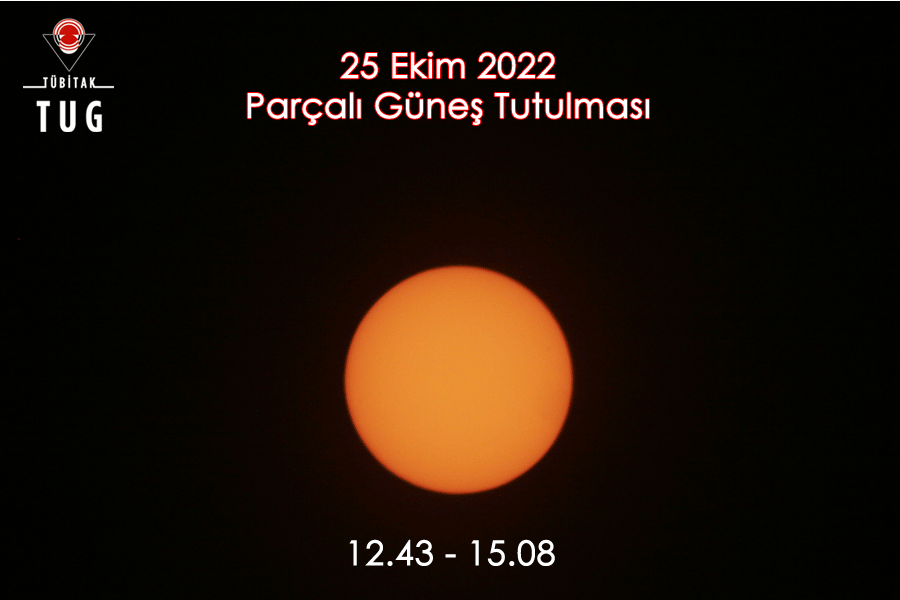The only Solar Eclipse that can be observed from our country this year occurred on Tuesday, October 25, 2022. The Moon entered between the Earth and the Sun, partially closing the Sun's disk. While the time of the maximum phase of the Partial Solar Eclipse and the coverage rates of the Solar disk vary from year to year, at most about 50% of the Sun was covered by the Moon (our Eastern provinces) and the entire eclipse lasted for about 3 hours.

A special public day event was held in the TÜBİTAK National Observatory, located in the Akdeniz University Campus. Akdeniz University, Faculty of Science, Department of Space Sciences and Technologies Student Community (AU-UBT) supported the event. Seminars were given by TUG astronomers at BİTOM to student groups and teachers of approximately 400 people from Muğla, Alanya and Antalya, and TÜBİTAK Popular Science Publications were given as gifts. All phases of the eclipse could be watched by visitors using different observation techniques, including special filtered eclipse glasses, reflection technique, telescopes with Mylar filters and special Hydrogen Alpha filters. Approximately 1000 people attended the event, in which the majority of the students and the public showed great interest.

In the live broadcast on official Youtube account of TÜBİTAK National Observatory , the image obtained with a telescope with a special filter (Hydrogen Alpha) and CCD camera system that shows the "Color Sphere" (Chromosphere) layer of the Sun from the beginning of the eclipse to the end was published. For the location of the Antalya TUG, where the broadcast was made, the eclipse took place between 12.40-15.08 and the Sun disk was covered by 35%. Throughout the broadcast, TUG astronomers gave information about our star The Sun, Solar Eclipses, Solar Observation Techniques, and frequent warnings were made to draw attention to eye safety. Associate Prof. from Akdeniz University, Department of Space Sciences and Technologies, Ali Kılçık gave information about the Sun-Earth interaction and short interviews were held with our visitors who came to watch the eclipse. The broadcast was followed by nearly 23,000 viewers during the eclipse, after which the broadcast reached nearly "half a million" viewers!



The closest Solar Eclipse that can be observed from our country will occur as Partial Eclipse on August 2, 2027, and approximately 80% of the Sun disk will be covered.


